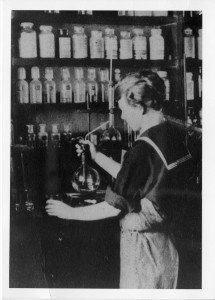
87% of the most highly cited articles are authored by fewer than 1% of scientists. That is the finding of a recent study by John Ioannidis and colleagues published in PLOS One.
The authors examined the entire SCOPUS database to determine the number and characteristics of scientists who had an uninterrupted continuous publication record (UCP) for a period of 16yrs from 1996 to 2011.
Out of over 15 million authors, 150,608 had such a UCP record, and of those, 73.3% could be deemed ‘successful’ as determined by citation metrics and the author’s H index – a measure of their productivity as well as the impact of their work. This proportion is significantly diminished to 43.7% for researchers who skipped only one year.
In analyzing the characteristics of the researchers the authors find that medical research, physics and chemistry are areas where this UCP pattern predominantly occurs and less so in computer science and the social sciences. The authors speculate on possible reasons why continuous yearly publications are necessary for success and how this might be more important for some fields rather than others.
They also discuss barriers to continuous publishing, such as poor research infrastructure and the unavailability of long term grants. It is not news that a minority of scientists should be so influential, but the size of the minority (1% !) is a surprise.
There is no doubt that this article raises many questions and avenues for further discussion. In particular, how far does this minority rely on the efforts of junior colleagues for their success? It also provides further evidence of the pressures scientists are under to publish if they wish to have successful career – a pressure that drives some to unethical conduct.
What is disappointing to me about this article is that the authors merely touch on gender related issues or, ‘child bearing’ as they call it, as possible reasons for the small minority in their discussion.
For some fields, including medical research, the implication is that a researcher would have to publish continuously for 16 years in order to have any chance of joining that elite minority, and even a break of one year diminishes the chances of success. This has grim implications for women researchers who wish to take a career break to have children.
The UK government not only recognizes the need for more scientists and engineers, but the economic value of women scientist. There have been drives to encourage more girls into science and even calls to address gender biases in the scientific community and for more stable career paths that are amenable to family life.
However, these are short sighted measures if, once in science, women are faced with an all or nothing, ‘publish or perish’ choice. It is not surprising that they choose to leave. The findings of this study are worrying and should be a catalyst for further debate on how to retain and reward talented scientists irrespective of gender. The way their contributions are measured and recognized has to change.
5 Comments